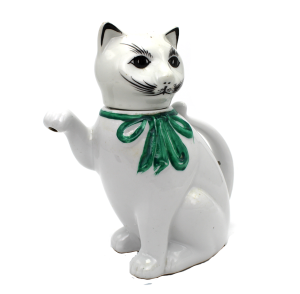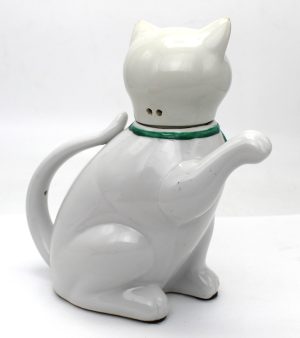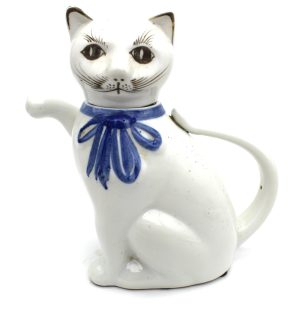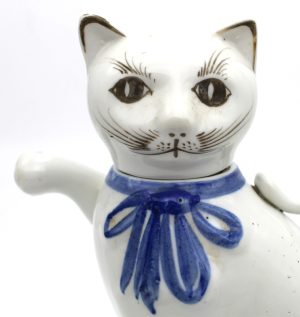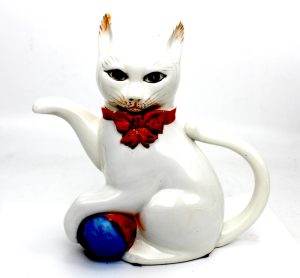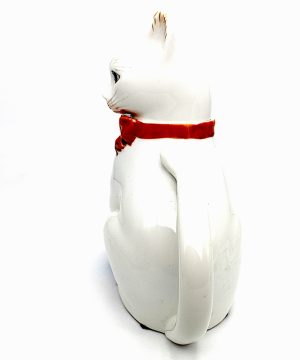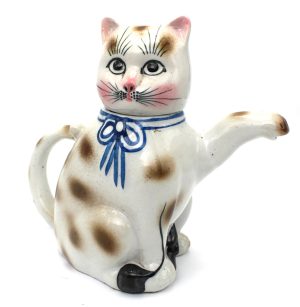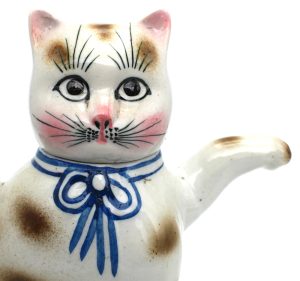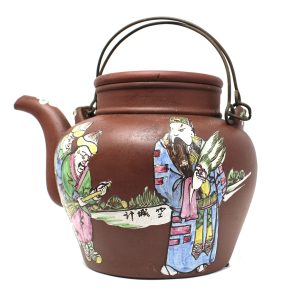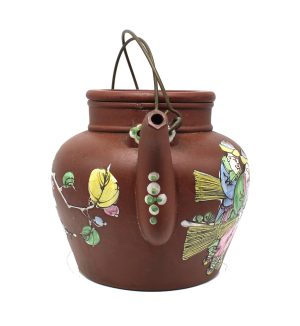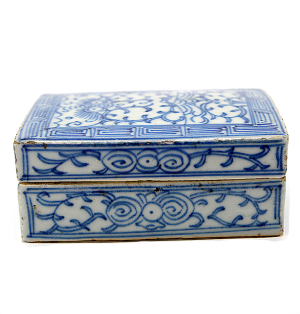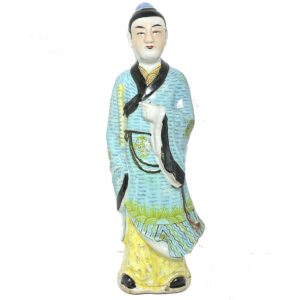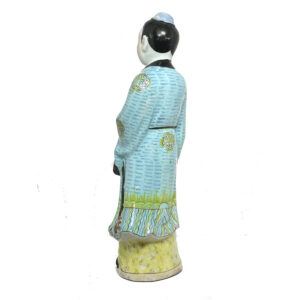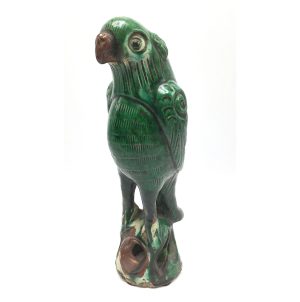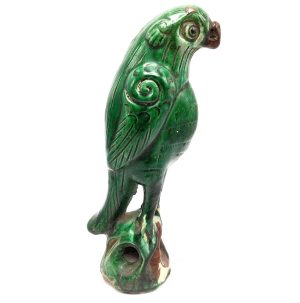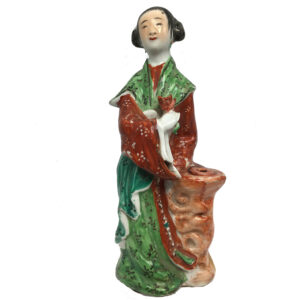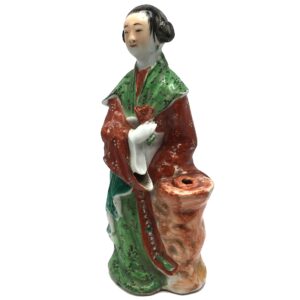Showing 37–45 of 45 results
-


$135.00
H: 6.5″ W: 6.5″ D: 3.5″ | FREE SHIPPING WITHIN CONTINENTAL U.S.!
This charming porcelain a cat teapot with a raised paw has a removable head to pour liquid into the vessel and a long sinuous tail handle for pouring liquid from the opening at the end of the paw. The design is whimsical and colorful with a thin green ribbon collar and an impressive dangling ornamental bow with black accents defining the face, ears and head.
-


$135.00
H: 7” W: 7” D: 3.5” | FREE SHIPPING IN CONTINENTAL US!
This charming white porcelain cat teapot with a raised paw has a removable head, a sinuous tail handle, a paw spout and a removable head . Beautifully hand-painted whimsical and colorful designs include a thin ribbon-like blue collar, an impressive dangling ornamental bow, and the black accents that define the face, ears, head and paws.
-


$135.00
H: 8” W: 8” D: 3.75” | FREE SHIPPING IN CONTINENTAL US!
This charming white porcelain Siamese cat teapot has a raised paw for pouring tea, a removable head for adding water , and a long sinuous tail handle. The beautifully hand-painted design is whimsical and colorful with a thick dark red collar ribbon, a matching ornamental bow, and a ball under its left paw. Black, orange, red and blue accents define the cat’s face, ears, head, paws and the ball.
-


$135.00
H: 7” W: 8” D: 3.625” | FREE SHIPPING WITHIN CONTINENTAL U.S.!
This porcelain teapot is a rotund cat figurine comically sitting on a mouse. It has a raised paw spout, a removable head and a long sinuous tail handle. The whimsical and colorful design with long ribbon and blue collar with a dangling blue bow and the black, pink, and brown accents that define the face, ears, head, paws and body and all are hand painted.
-
Sale!


$975.00 Original price was: $975.00.$695.00Current price is: $695.00.
H: 6” W: 8.5” D: 6.125” | FREE SHIPPING IN CONTINENTAL U.S.!
Yixing stoneware teapots are praised as the best in the world for tea infusion. This gorgeous, extremely rare antique teapot with tight-fitting lid and elegant spout is finely decorated with a brown wash and hand applied bright painted enamel designs designs of a scene from the Peking opera Romance of Three Kingdoms. The floral images are a wish for a long and healthy life, perfect metaphors for those sharing a fresh pot of tea with those they love. Kiln seals are impressed in the body, bottom and lid.
-


$115.00
SOLD
This finely hand-painted rectangular porcelain cobalt blue and white box with underglaze designs was used to store ink cakes as part of an assortment of prized items on a Chinese scholar’s desk. The cover is painted with bindweed designs, wave-like curved lines usually indicating water, and a fanciful bat’s face inside a continuous geometric meander or fret pattern. The box sides are covered with bindweed, spirals, and circles, and although circles and round shapes are usually associated with or represent heaven, these seem strictly decorative. There are traces of red, brown, and black ink inside and on the edges of the unglazed portions and rough and stained areas on the unglazed portions of the box and wear consistent with and demonstrating its age and use.
-


$295.00
H: 12” W: 4.5” D: 3” | FREE SHIPPING WITHIN CONTINENTAL U.S.
This elegant Chinese Republic Period porcelain is the Taoist immortal Han Xiangzi carrying his auspicious flute dressed in a beautiful blue robe with wide black borders, fine internal decorations and a decorative yellow floral undergarment. On the bottom is the kiln seal. As the patron saint of musicians and florists, it is a great gift for someone who enjoys these pursuits.
-


$295.00
SOLD H: 9″ W: 3 ” D: 3.5 ” | FREE SHIPPING!
Chinese Republic ceramic parrots are commonly depiction as this one perched on an open rocky base. Porcelain parrots were produced for the domestic and export markets and sometimes sold in pairs leading some to believe they, like pairs of fish, symbolized the love and fidelity of married couples. This one has vivid polychrome colors, large eyes and stylized wings. This piece is in excellent condition.
-


$240.00
Ht: 9.75″ W: 3.5″ D: 2.5″ | FREE SHIPPING WITHIN CONTINENTAL U.S. !
This Chinese Republic Period delicate porcelain figurine holds a rose at her heart in her right snow white hand, her left arm covered by her shawl resting on a waist-high decorative vase with an opening to hold incense (joss) sticks. Her shawl drapes over her shoulders and lower garment with floral motifs extending to the beaded belt at her waist. The sweet facial expression with slightly smiling bowed lips is framed by her piled hair looped in a chignon over each ear. Given her luxurious garments and accessories, she is an aristocratic woman. The rose was often used on porcelains during this period, representing eternal spring.
End of content
End of content

